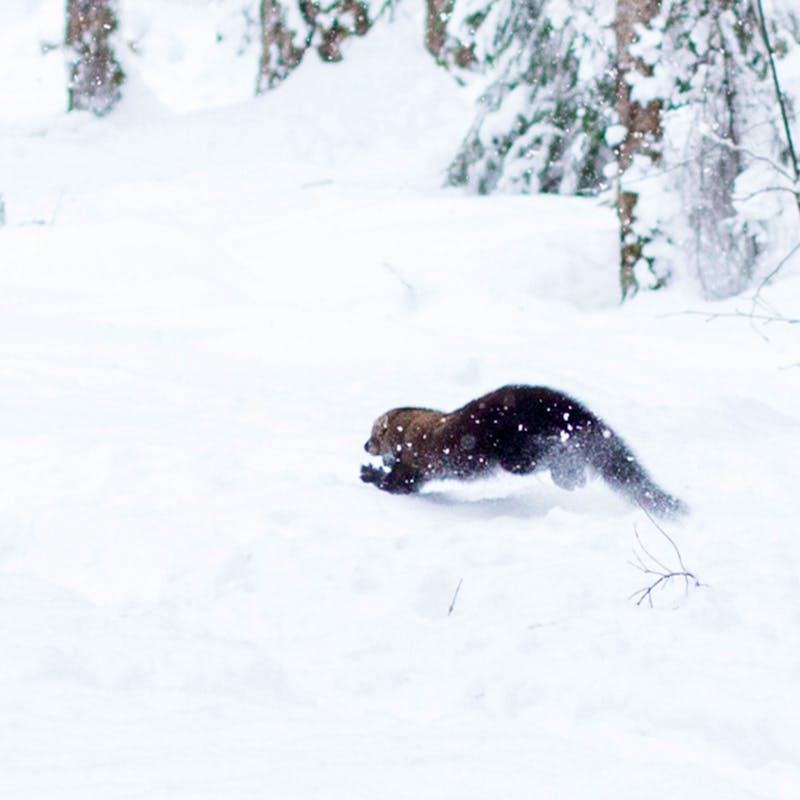
Mexican gray wolf. Jim Clark/ USFWS
BREAKING: Defenders of Wildlife and the Center for Biological Diversity – represented by the Western Environmental Law Center – are intervening against a lawsuit seeking the trapping and shooting of endangered Mexican gray wolves.
Silver City, N.M. – Today, the Center for Biological Diversity and Defenders of Wildlife – represented by the Western Environmental Law Center – are intervening against a lawsuit that seeks the trapping and shooting of endangered Mexican gray wolves, the third since reintroduction began in 1998.
“The Fish and Wildlife Service made the right call when it stopped wolf removals,” said Eva Sargent, Defenders of Wildlife’s Southwest program director. “We are intervening on the side of the Fish and Wildlife Service to defend that decision, so the service can move forward with developing a science-based plan with clear goals for wolf recovery. With the Mexican wolf on the edge of extinction, every effort must be made to keep wolves in the wild and bolster the population.”
Catron and Otero counties in New Mexico, two livestock industry associations and three ranching outfits with grazing permits in the Gila National Forest are suing the U.S. Fish and Wildlife Service and the New Mexico Department of Game and Fish to overturn decisions made by the Fish and Wildlife Service to not trap or shoot wolves from the San Mateo and Middle Fork packs. The plaintiffs allege a violation of the National Environmental Policy Act and seek legal fees under the Equal Access to Justice Act.
“We are intervening in part to prevent any settlement agreement that would rid our public lands of the Mexican gray wolf. In order for wolf recovery to be successful, it’s vital that we keep political forces from influencing what should be a science-based process,” said Michael Robinson of the Center for Biological Diversity.
The lawsuit appears aimed at undermining a 2009 settlement agreement between the conservation groups and the Fish and Wildlife Service in which the agency agreed to reassume the lead role in Mexican wolf recovery and to end the controversial “wolf-control” rule, Standard Operating Procedure 13 (SOP 13), which required permanently removing a wolf from the wild – either lethally or through capture – if it were suspected to have killed three livestock in a year.
After having shot or authorized the shooting of 11 wolves, trapped and not released 46 wolves, and suffered the death of 18 wolves as a consequence of live capture since reintroduction, the Fish and Wildlife Service in 2008 stopped trapping and shooting Mexican wolves for “control” purposes (The agency still captures wolves on occasion for veterinary purposes).
“The Fish and Wildlife Service made the right call when it stopped wolf removals,” said Eva Sargent, Defenders of Wildlife’s Southwest program director. “We are intervening on the side of the Fish and Wildlife Service to defend that decision, so the service can move forward with developing a science-based plan with clear goals for wolf recovery. With the Mexican wolf on the edge of extinction, every effort must be made to keep wolves in the wild and bolster the population.”
“We are intervening on the side of Fish and Wildlife Service to help defend the agency’s actions against plaintiffs’ unsubstantiated claims, as well as to continue our steadfast efforts to ensure that the Mexican wolf reintroduction and recovery program is carried forward in the most beneficial manner for the species,” said Geoff Hickcox, attorney for the Western Environmental Law Center, which represents the intervenors.
“This lawsuit, like the previous anti-wolf suits that were dismissed, is without merit,” said Robinson. “But that doesn’t mean that the threat isn’t real. The Mexican wolf can ill-afford further delay in management reforms and development of a science-based recovery plan, and we are concerned that the Fish and Wildlife Service will seize on this mischief as a new excuse for longstanding, inexcusable lethargy and inaction.”
Background on the Mexican Gray Wolf
Since the 1990s, the Fish and Wildlife Service has repeatedly stated that it will prepare a new Mexican wolf recovery plan to bring modern science and clear goals to the recovery program and to replace a 1982 Mexican wolf recovery plan that had no discussion of genetics and no recovery criteria to guide eventual delisting. In 1995, the agency completed a draft new recovery plan, but never approved it. In January 2005, the agency suspended meetings of its recovery team which was close to developing a new draft and formally disbanded that team in July 2010. It has not yet convened a new recovery team despite repeated proclamations that it will do so.
At the last count in January 2010, biologists could find just 42 Mexican gray wolves and only two breeding pairs in Arizona and New Mexico – a dangerously low number that scientists say contributes to ongoing genetic inbreeding that is causing low birth and pup survival rates, creating a downward demographic spiral. The population dropped by 19 percent between 2009 and 2010. A new count will be conducted in January 2011.
In May this year, the Fish and Wildlife Service acknowledged that the Mexican wolf reintroduction program was “at risk of failure.”



